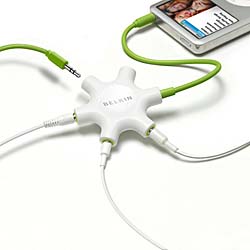Teacher’s Lounge
Welcome to the Teacher’s Lounge
In this section you will find tools and resources for teachers interested in adding interactivity in the classroom.
This book contains a lot of information and exercises. Indeed, the entirety of the book cannot be covered in a standard one-semester music appreciation class. Both of us have spent entire classes on one page or another, depending on the group dynamic or conversation. With that understanding, here are a few suggestions:
- This book spends more time than the usual textbook teaching students how to listen. Chapter 1 is comprised of introductory listening exercises. In a standard music appreciation class, this chapter should be used for approximately 2-4 weeks before moving on to the history of music.
- Assignments can be completed in class (as a whole), in small groups, or as homework. Each option provides different rewards. Experiment with the approach that works best for your class. Here are two specific ideas:
- Tell students to bring their headphones to class. Using a few five-pronged headphone splitters, break the class into groups. Give each group a specific listening assignment that they will complete in class. The group should plug into one of their phones and listen together. Following the listening ,they will discuss and then make a short presentation to the class. This is our favorite approach. (Note:The “Rockstar Multi Headphone Splitter” is a type of headphone splitter that costs around $15 and can be found on Belkin’s website).

- Split the class into groups. Assign each group a chapter or exercise from the book to be completed outside of class and then presented in class.
- Overall, you should select exercises that are particularly relevant to your class.
- There is enough material in each of the chapters that you can vary assignments from semester to semester. This can allow for experimentation and keep the material fresh for you.
- The following assignment gets to the heart of our approach: “For your homework, find out who Beethoven is and answer the chapter 6 questions using the Internet. Be careful where your get your information, you’ll be dependent on it for your quiz next class.” This assignment has changed our classrooms by creating an experience of discovery, information validation, and personal student memory through educational participation. Also, be sure to discuss with students which websites are more reliable. For example, information Wikipedia can be used, but should be confirmed by cross-referencing with Grove Music Online or another reputable academic source.
- Many of the questions in this book require student opinions and journaling. Through the process of forming an opinion, each student creates a deeper interaction with the music. Our goal is to create a collective and individual learning experience that goes beyond music. You will find that students will express deep personal feelings.
- One of the most important questions appears towards the end of the book: “Do you see a pattern in the music you connected with from each period?” Students will realize that when we talk about music we inevitably define ourselves as much as the music itself.
At the end of each semester, many students want to keep their book because they have expressed themselves, discovered their own information, and solved their own listening puzzles. Like an art class, each semester creates a finished product where something personal has been created.